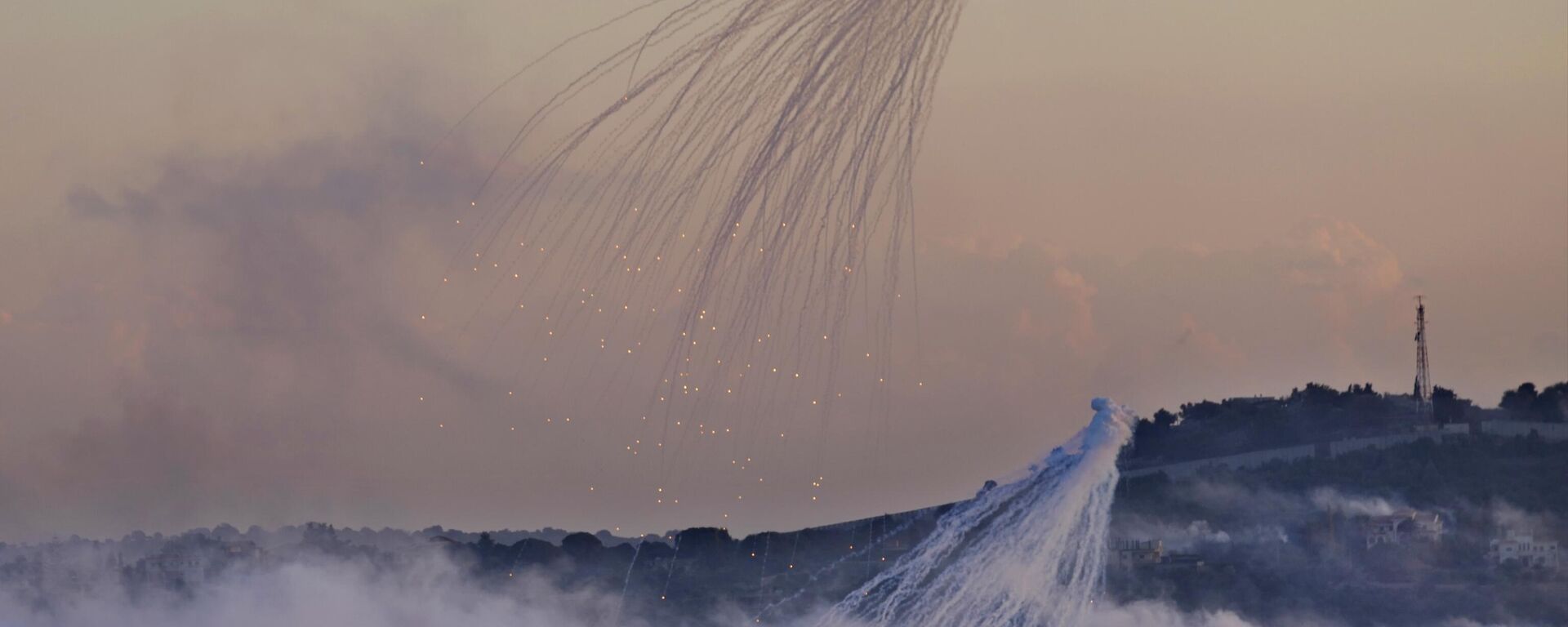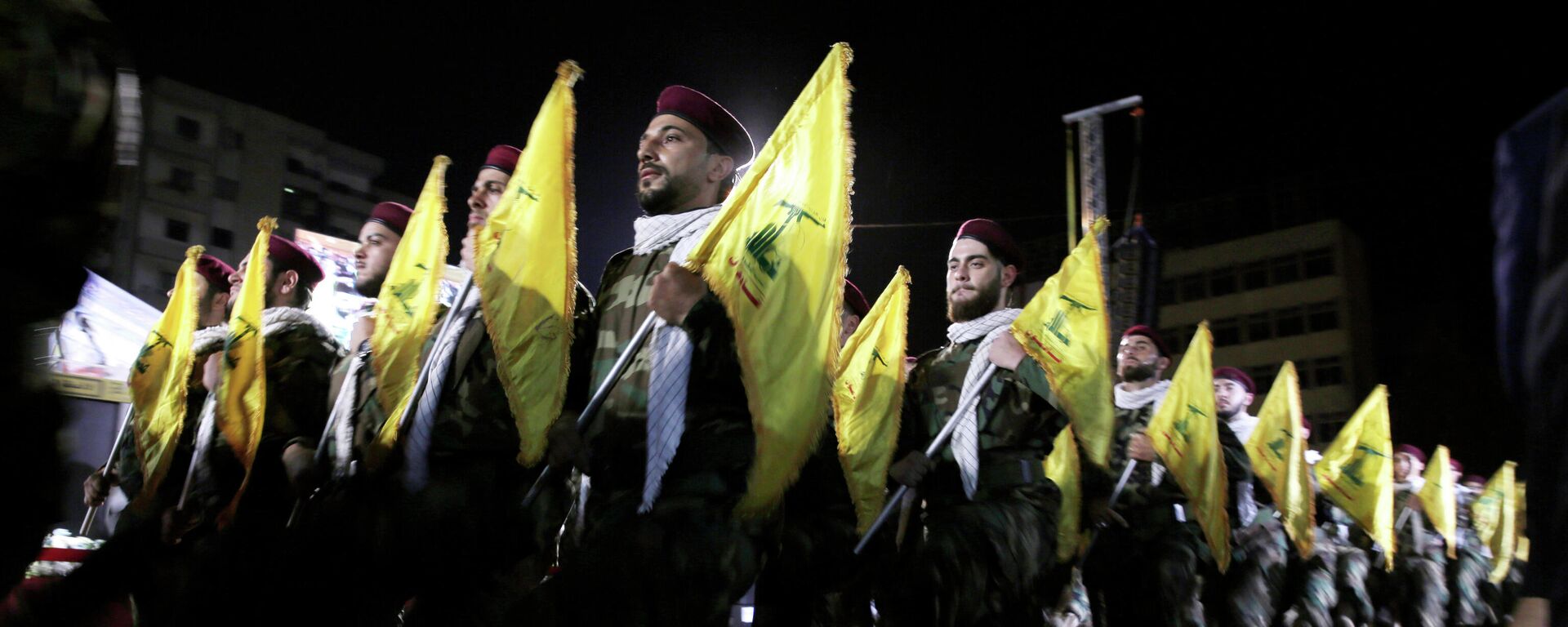Hamas’ Labyrinth, IDF’s ‘Nightmare’: What is Known About Vast Tunnel Network Beneath Gaza
18:05 GMT 19.10.2023 (Updated: 09:23 GMT 05.12.2023)
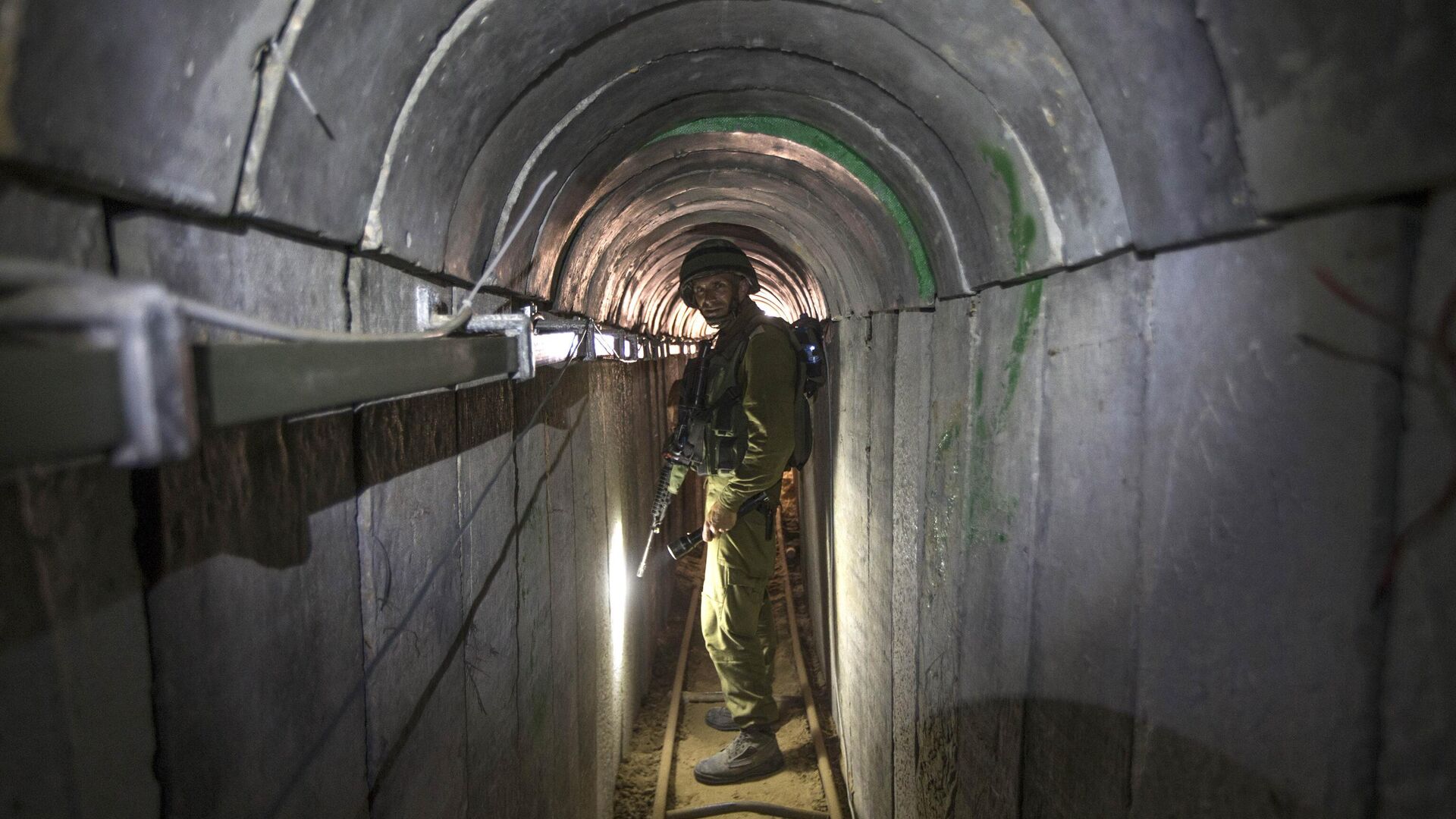
© AP Photo / Jack Guez
Subscribe
Israel has delayed its widely expected ground invasion of Gaza, with the dangers of urban warfare combined with Hamas’s tunnel networks threatening to suck Israeli forces into a quagmire and put a major dent in the Israel Defense Force’s reputation. Just how extensive are the tunnels below Gaza? Sputnik explores.
Top retired US officials have come out of the woodwork over the past week to warn Israel to think twice about launching a massive ground assault in Gaza.
“This is going to be a very, very tough fight,” retired former US Iraq and Afghanistan commander David Petraeus predicted in an interview with US media over the weekend. “There are tunnels; there will be rooms that will have improvised explosive devices. You have to clear every building, every floor, every room, every basement, every tunnel. Civilian losses are inevitable, and tough Israeli losses lie ahead as well,” Petraeus stressed.
The commander’s sentiments were echoed by President Biden, who warned Tel Aviv on Wednesday not to repeat America’s “mistakes” after the 9/11 terror attacks.
“Justice must be done. But I caution this: While you feel that rage, don’t be consumed by it. After 9/11 we were enraged in the United States. While we sought justice and got justice, we also made mistakes,” Biden said, presumably referring to the US wars of unprovoked aggression in Afghanistan and Iraq in 2001 and 2003, and the US Seal Team Six assassination of alleged 9/11 mastermind Osama bin Laden in Pakistan in 2011.
Western and Israeli media have offered a range of possible explanations as to why the IDF hasn’t yet proceeded with a ground invasion of Gaza, despite boastful promises by senior Israeli officials to wipe Hamas “off the face of the Earth,” and an IDF deadline which expired last Saturday ordering over a million Palestinian civilians to evacuate the Strip’s northern half. Among the possible reasons mentioned are concerns for the Israeli hostages held by militants, political overtures to allies concerned by large-scale civilian casualties, and fears by Israeli intelligence that Hezbollah in Lebanon might open a second front in the north the moment Israeli troops set foot in Gaza.
Tunnel Vision
But another major factor that may help explain Israeli hesitation about a ground-based operation inside Gaza relates to IDF commanders’ weariness of the difficulties they would inevitably face in ensuring battlefield superiority against the roughly 30,000 Hamas fighters in Gaza’s dense urban environment, much of which has already been turned into piles of rubble perfect for ambushes and snipers’ nests thanks to Israeli airstrikes.
As pointed out in a 2021 analysis by West Point’s Modern War Institute, defenders nearly always have the advantage in urban warfare.
“Today,” the paper stressed, “the advantages provided to a weaker force to occupy urban terrain are great. A weaker enemy can use the physical terrain for concealment and cover both to fight from (e.g. using heavy-clad buildings as de facto military-grade defensive structures) and to maneuver (e.g. through buildings or underground in civilian infrastructure and prepared tunnels). Defending forces can also hide among the protected populations and structures outlined by the laws of armed conflict. In short, they can reduce the effectiveness of a substantial portion of present-day military technologies and tactics.”
Put another way, urban environments threaten to turn into a great equalizer between the assault rifle, grenade, IED and anti-tank-gun-wielding Hamas fighters, and the technologically sophisticated, heavy armor, air and artillery supported Israeli army, with defenders not only able to see incoming attackers, but survive airstrikes using tunnels and pre-made holes in walls of buildings to live to fight another day. And that's on top of their home turf advantage.
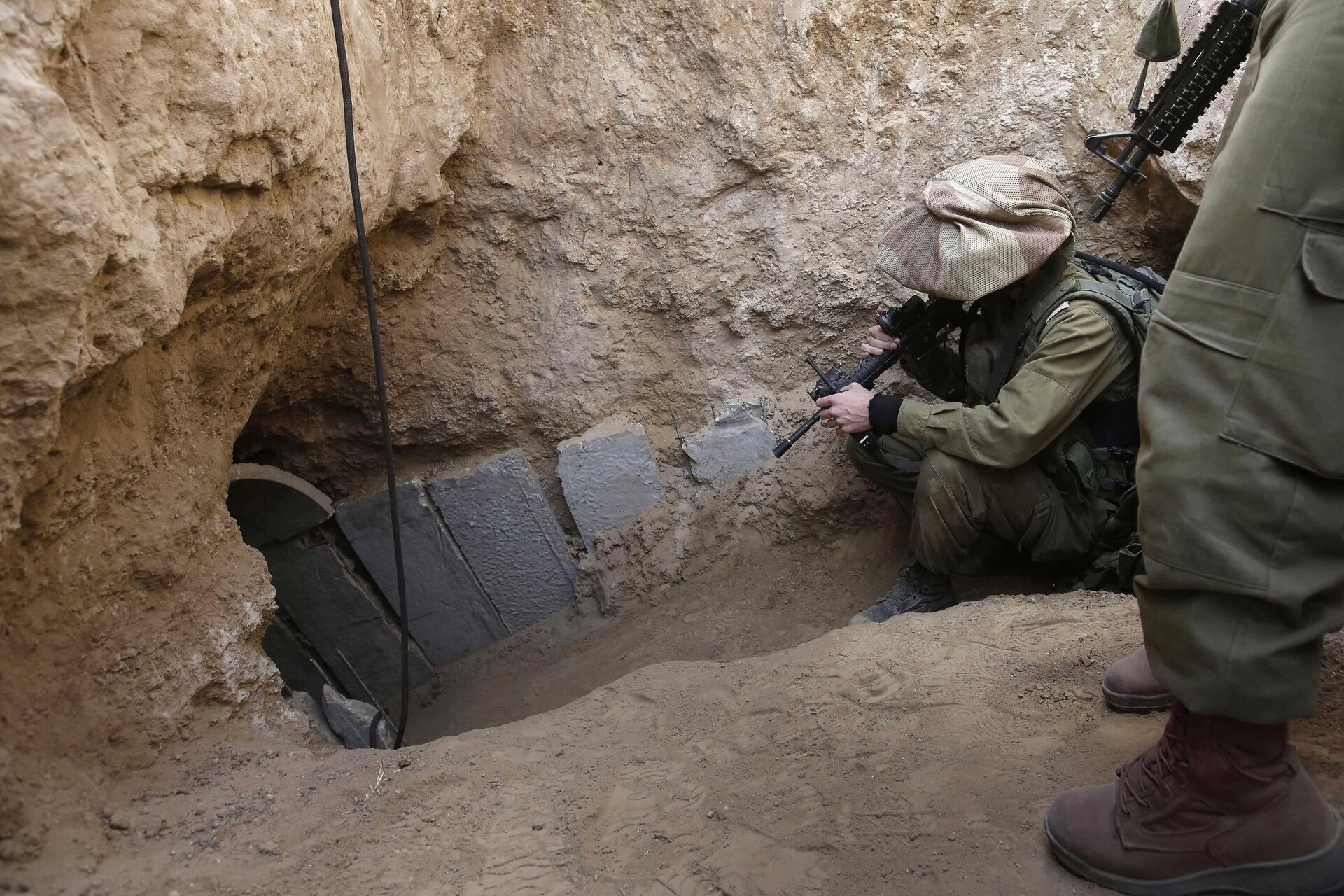
FILE - In this Sunday, Oct. 13, 2013 file photo, Israeli soldiers enter a tunnel discovered near the Israel Gaza border.
© AP Photo / Tsafrir Abayov
In Hamas’ case, tunneling has been used extensively by the militants to smuggle equipment and supplies across the heavily fortified border ringing Gaza for decades, and is thought to have become sophisticated enough to create entire underground networks to quickly move and evacuate fighters and equipment, operate underground command posts, and even workshops for the production of weaponry.
Hamas Political Bureau chief Ismail Haniyeh boasted in 2018 that Hamas’ tunnel network in Gaza had reached double the size of the Cu Chi tunnels dug beneath Saigon by the Viet Cong during the US War in Vietnam. Detailed maps based on IDF data have shown the dramatic extent of Hamas tunneling efforts through the Gaza Strip. During the 2014 Gaza War alone, Israeli forces discovered some 100 km-worth of secret underground passageways. In 2021, Hamas let slip that it had built tunnels stretching a combined length of 500 km.
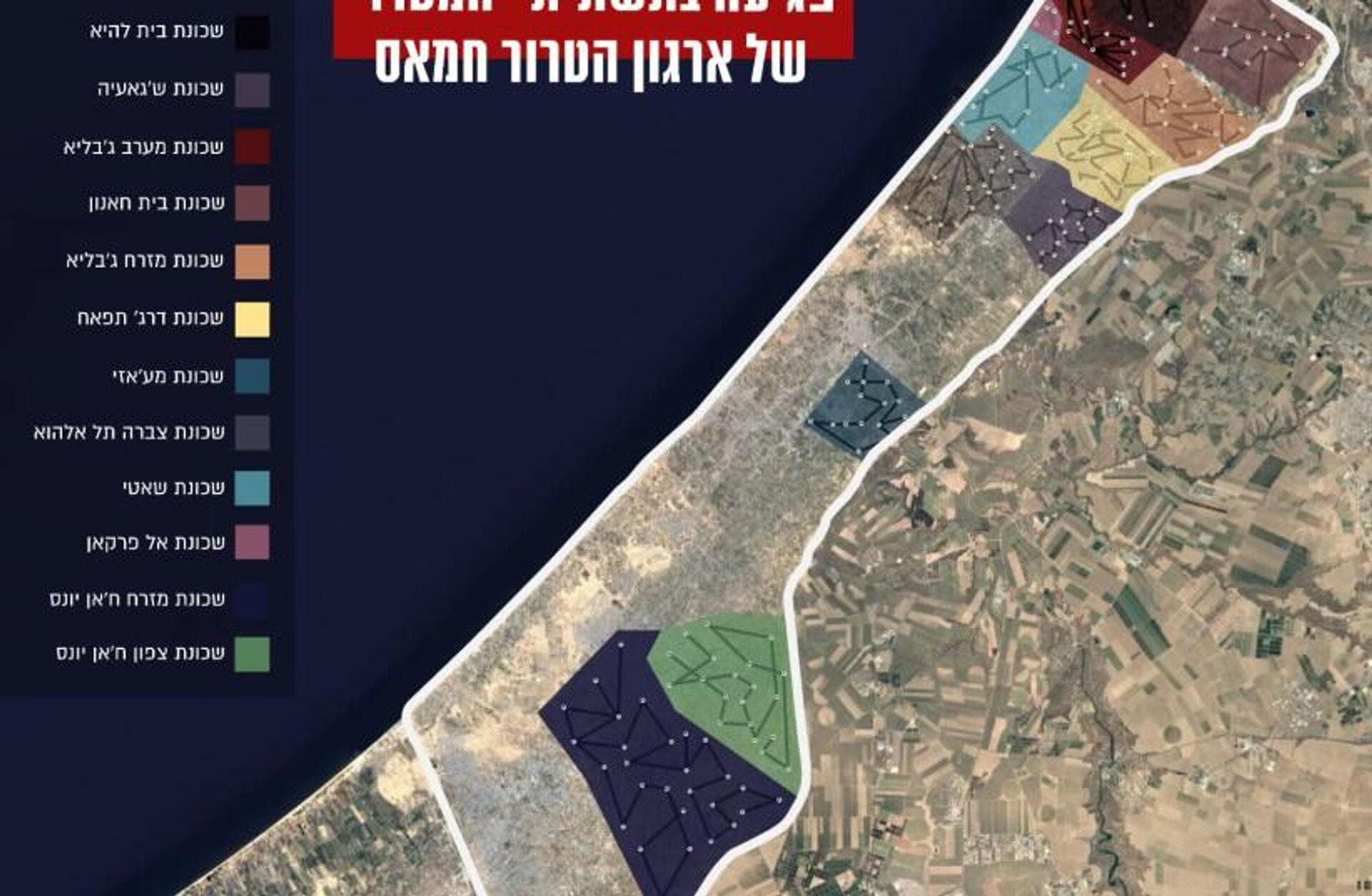
IDF map shows Hamas' underground 'metro' system of tunnels burrowed underneath various areas of the Gaza Strip, classified by sector.
© Photo : IDF
Tunnel entrances are often hidden beneath buildings, vegetation and other terrain, often making it difficult or even impossible for the Israeli military and its powerful intelligence collection apparatus to spot them.
Gaza’s militias have had nearly 40 years’ experience digging the tunnels, with their designs growing in length, sturdiness and complexity. In 2022, for example, Israeli special forces discovered a Hamas tunnel some 70 meters (230 feet) underground, enough to withstand even the heaviest of Israeli bombings. The tunnels are also relatively cheap to build, with a 2014 after action report on Operation Protective Edge estimating an average cost of around $100,000 per tunnel (about the cost of a single Israeli Iron Dome Tamir interceptor) and a construction time frame of three months.
Psychological Warfare
Hamas’ tunneling operations threaten to entangle the IDF in a crisis of morale that it will have a hard time crawling out from. “Imagine going into an environment and then you’re progressing across the field or into the outskirts of the city, then all of a sudden, some enemy forces pop up behind you and there were none there before,” Washington-based security analyst Bradley Bowman told US media this week.
“That’s kind of a nightmare for an assaulting force,” he said. “Once you’re talking about block-to-block, building-to-building, room-to-room, in some cases, hand-to-hand fighting, it really gets pretty brutal pretty fast,” Bowman stressed.
IDF spokesman Jonathan Conricus admitted that uprooting Hamas would not be “an easy endeavor because Hamas has embedded itself inside and underneath the Gaza Strip,” and has already used its labyrinth of tunnels “to stop our weapons and hide countless rockets in all of these clashes that we’ve had.”
West Point Modern War Institute analyst John Spencer has also used the term “nightmare” to describe Hamas’ tunnel networks, warning that there's “no perfect solution” to the “problem” that will be “awaiting Israeli forces” if and when Tel Aviv decides to launch a ground offensive.
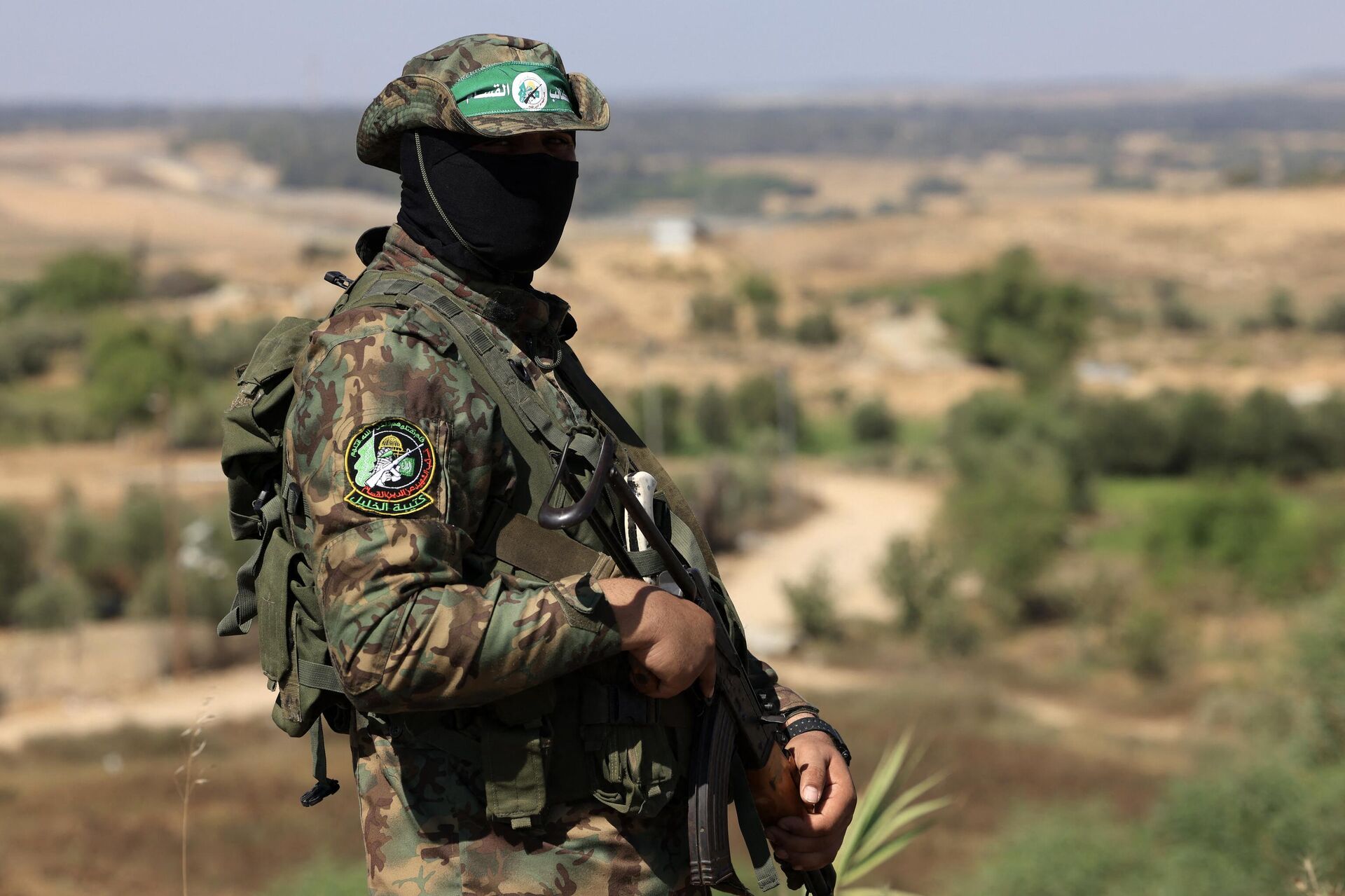
A Palestinian fighter of the al-Qassam Brigades, the armed wing of the Hamas movement, takes part in a military parade to mark the anniversary of the 2014 war with Israel, near the border in the central Gaza Strip on July 19, 2023.
© AFP 2023 / MAHMUD HAMS
“Hamas will have already placed its leadership, fighters, headquarters, communication, weapons, and supplies like water, food, ammunition in its tunnel complexes to prepare for the ground assault by Israeli forces. The tunnels will allow fighters to move between a series of fighting positions safely and freely under massive buildings, even after the IDF drop thousand-pound bombs on them. Hamas tunnels often have generator power, air ventilation, water pipes, and stockpiles of food that will allow the group’s fighters to better withstand the most basic challenges, like normal exhaustion, that result from urban siege and isolation. Hamas leaders and fighters will use the tunnels to remain mobile to escape entire sections of the combat area when they feel they are about to be decisively attacked or surrounded,” the observer explained.
Conversely, facing off against Israeli troops forced on the offensive, tunnels will allow Hamas carry out surprise attacks against advancing enemy forces, infiltrating behind their lines and potentially wreaking havoc on rearward facing units with snipers, anti-tank gun and RPG-armed troops, and perhaps even special “small hunter-killer teams” to pop up, strike and slip back down into hidden tunnels.
Israeli forces chasing Hamas into the tunnels would face a series of time-consuming and dangerous problems, since night vision goggles that depend on ambient light will not work, nor will navigation and communications equipment. Even numerically, “a single defender can hold a narrow tunnel against a much superior force,” Spencer noted.
Of course, IDF troops won’t be going underground defenseless, with the Israeli army maintaining entire specialized units whose whole job consists of finding and destroying tunnels, working with specially trained dogs, and fielding specially-designed robots that can scout out for and destroy enemy forces without having to risk soldiers’ lives.
“But the hard truth,” says Spencer, “is that the depth and scale of Hamas tunnels in Gaza will surpass Israel’s specialized capabilities.” Accordingly, “it may come down to IDF infantry and engineers dealing with tunnels as they discover them” the old fashioned way.
Lessons From Hezbollah
Tunnel warfare was used extensively by Lebanese militant group Hezbollah against the Israeli military during the 2006 Lebanon War. The high-intensity, 34-day conflict gave the IDF a bloody nose, with just 1,000 highly trained Hezbollah fighters tying down between ten and thirty times the number of Israeli grunts, and the IDF suffering 121 troops killed, over 1,200 wounded and nearly two dozen tanks lost compared to 250 killed militants, and forced to withdraw from southern Lebanon as a UN-brokered ceasefire stepped into force.
During the conflict, Hezbollah reportedly “surprised” the IDF with the quality of its training, tactics and weapons, including the effective use of tunnels to pop up from hidden positions, fire off at enemy forces, and disappear underground again before the IDF had a chance to respond.
So effective were Hezbollah’s underground operations during the 2006 war that the US Army’s Complex Operational Environment and Threat Integration Directorate characterized it in a 2014 assessment as a “tactical, operational, and even strategic victory” for the militant group won through the effective “use of the subterranean environment.” The “complex integrated network of underground tunnels and bunkers throughout southern Lebanon” was deemed to have served “as a key component of its planned defense.”
And while Hezbollah and Hamas are highly diverse militant groups, with the Lebanese militia perceived to be at least an order of magnitude above its Palestinian cousins when it comes to training, capabilities, available weaponry and foreign assistance, Hezbollah’s experience against Israeli forces should serve as food for thought for commanders and political decision makers in Tel Aviv in the coming days, weeks, and months.

